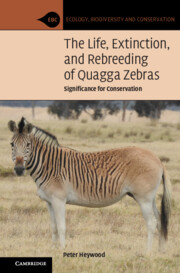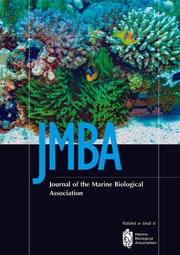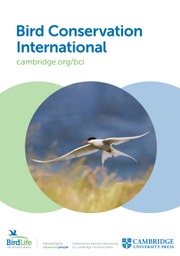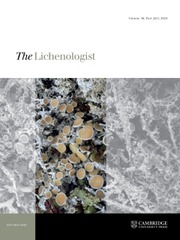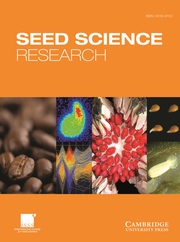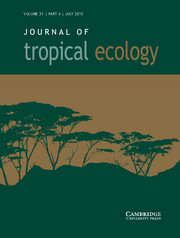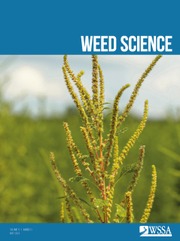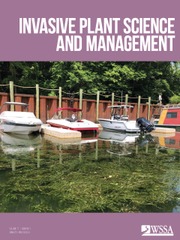The Life, Extinction, and Rebreeding of Quagga Zebras
Significance for Conservation
£39.99
Part of Ecology, Biodiversity and Conservation
- Author: Peter Heywood, Brown University, Rhode Island
- Date Published: May 2022
- availability: In stock
- format: Paperback
- isbn: 9781108926911
£
39.99
Paperback
Other available formats:
Hardback, eBook
Looking for an inspection copy?
This title is not currently available on inspection
-
Quaggas were beautiful pony-sized zebras in southern Africa that had fewer stripes on their bodies and legs, and a browner body coloration than other zebras. Indigenous people hunted quaggas, portrayed them in rock art, and told stories about them. Settlers used quaggas to pull wagons and to protect livestock against predators. Taken to Europe, they were admired, exhibited, harnessed to carriages, illustrated by famous artists and written about by scientists. Excessive hunting led to quaggas' extinction in the 1880s but DNA from museum specimens showed rebreeding was feasible and now zebras resembling quaggas live in their former habitats. This rebreeding is compared with other de-extinction and rewilding ventures and its appropriateness discussed against the backdrop of conservation challenges—including those facing other zebras. In an Anthropocene of species extinction, climate change and habitat loss which organisms and habitats should be saved, and should attempts be made to restore extinct species?
Read more- Appreciates quagga zebras fully: what they looked like, where they lived, what they ate, and the lives they lived, and motivates to conserve these and other animals
- Tells a compelling story about an animal whose study has influenced science and culture—often quoting the people who knew them best: settlers, hunters, biologists, and indigenous people
- Documents how easily organisms can go extinct and stresses the importance of conserving organisms and their habitats, rather than hoping that de-extinction will work miracles
Reviews & endorsements
'The book is an enjoyable account of this interesting case of demise and attempted resurrection, and will appeal to conservation scientists as well as wildlife enthusiasts.' Brian W. van Wilgen, South African Journal of Science
Customer reviews
Not yet reviewed
Be the first to review
Review was not posted due to profanity
×Product details
- Date Published: May 2022
- format: Paperback
- isbn: 9781108926911
- length: 242 pages
- dimensions: 229 x 152 x 12 mm
- weight: 0.42kg
- availability: In stock
Table of Contents
Acknowledgements
Introduction
1. Zebras
2. Quaggas
3. Coat coloration
4. Quaggas, zebras, and humans in Southern Africa
5. Quaggas abroad
6. Extinction
7. Afterlife
8. Rebreeding
9. Identity and conservation
Appendix 1. Early illustrations of quaggas
Appendix 2. Records of quaggas kept in Europe
Endnotes
Bibliography
Index.
Sorry, this resource is locked
Please register or sign in to request access. If you are having problems accessing these resources please email [email protected]
Register Sign in» Proceed
You are now leaving the Cambridge University Press website. Your eBook purchase and download will be completed by our partner www.ebooks.com. Please see the permission section of the www.ebooks.com catalogue page for details of the print & copy limits on our eBooks.
Continue ×Are you sure you want to delete your account?
This cannot be undone.
Thank you for your feedback which will help us improve our service.
If you requested a response, we will make sure to get back to you shortly.
×
